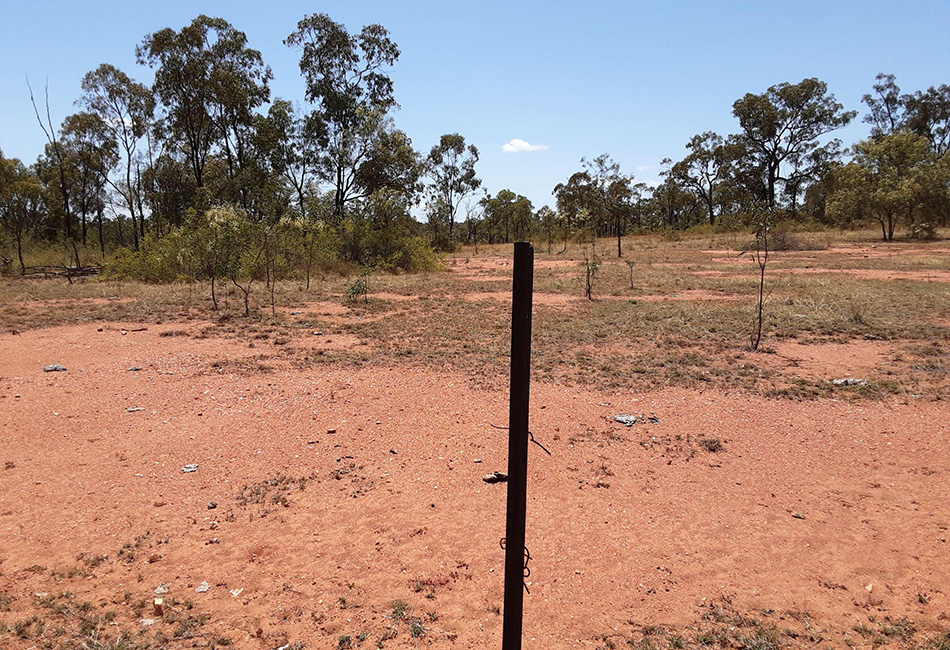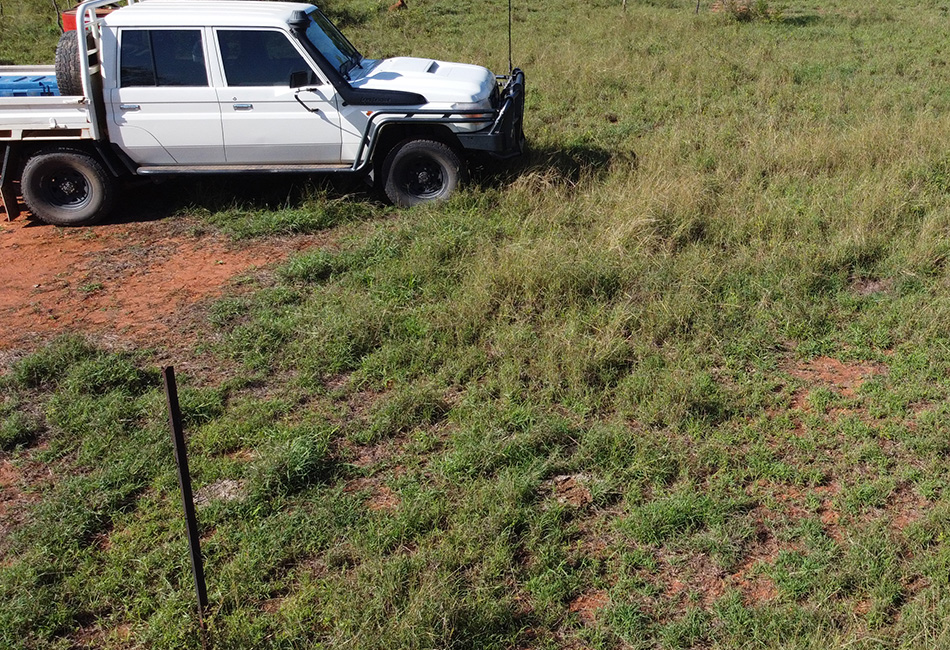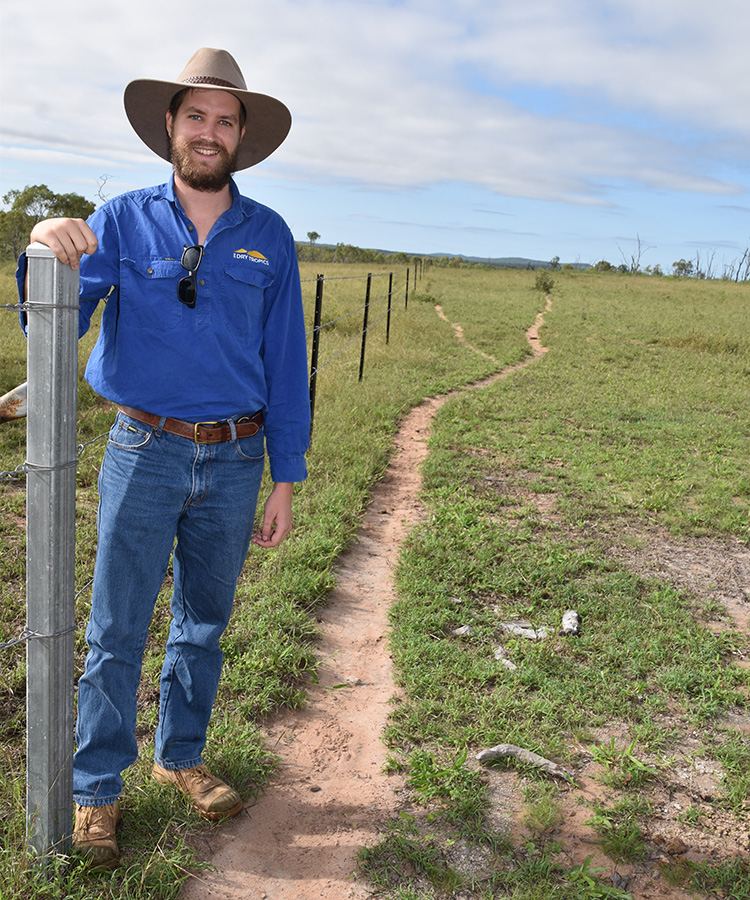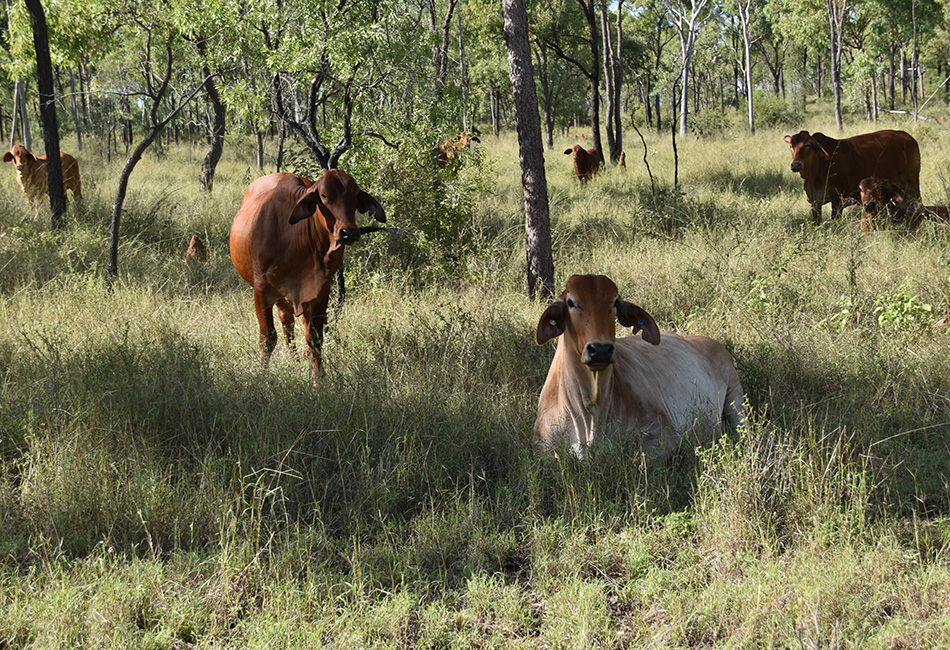A little mothering from Nature did the trick
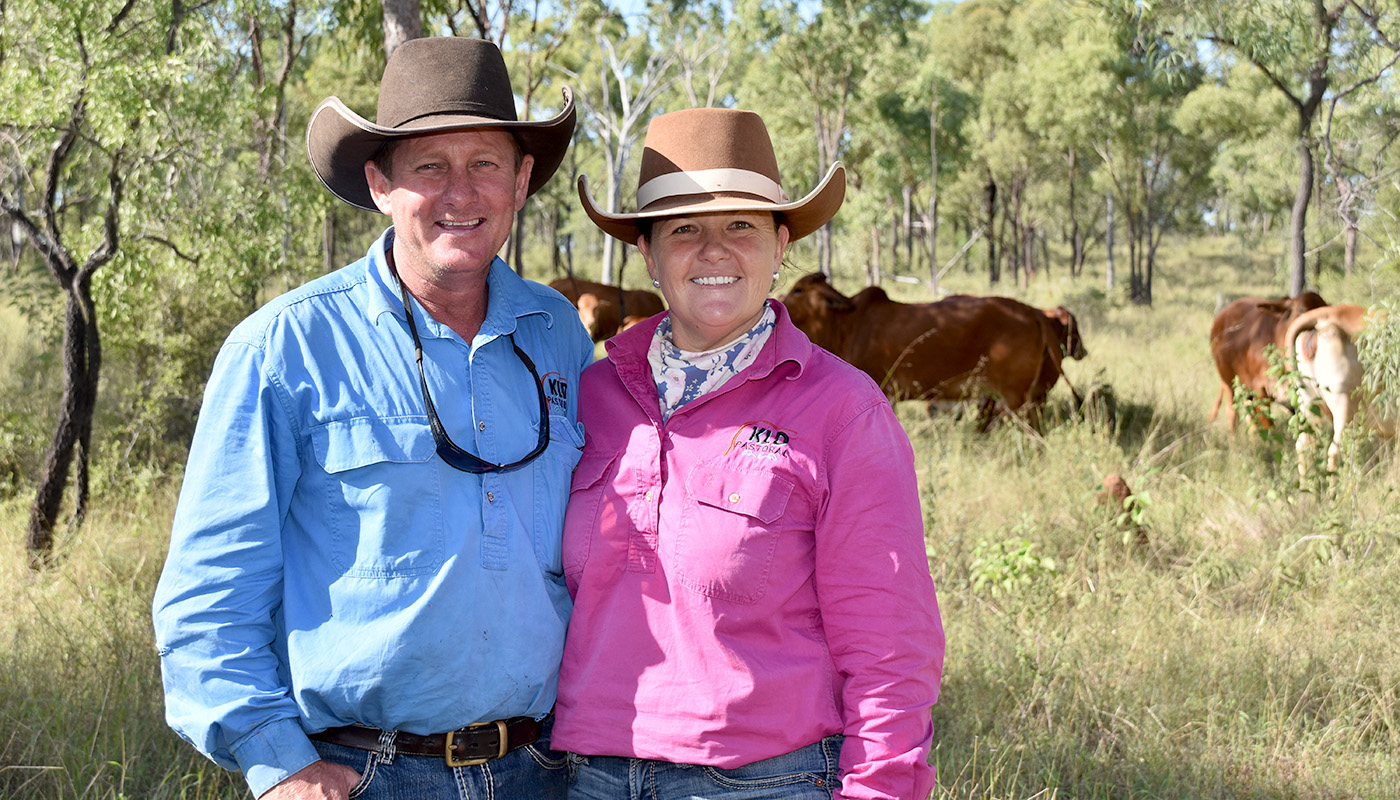
A little mothering
from Nature
did the trick
Kirkland Downs graziers Stacey Kirkwood and Ian Collins.
Kirkland Downs graziers Stacey Kirkwood and Ian Collins have never been so happy to be wrong.
They have a lush new productive paddock on their property where previously there was scalded, bare ground, unloved by cattle and capable of growing very little. Effectively, it’s a gift because all they did was rest it and allow nature to take its course.
The area — about 176ha in a corner of Rock Hole Paddock — had, for years, been scalded, unattractive ground growing little.
They believed it would never improve.
NQ Dry Tropics Grazing Team Leader Josh Nicholls with the new fence.
Ian and Stacey had a plan to contour-rip along those bare ridges about one-third of the way down the slope, then seed the whole area before the 2021 wet season.
But they didn’t implement the plan, opting instead, for the time being to go with NQ Dry Tropics Grazing Team Leader Josh Nicholls’ suggestions: “Shut the gate”.
When he made that suggestion, there was no gate to shut and no fence, but Stacey, Ian and nephew Tristan McCaul made short work of carving off about 10 per cent of the 1700ha Rock Hole paddock.
Stacey said they did the fencing, with support from the Grazing Resilience and Sustainable Solutions (GRASS) program and locked cattle out of the area.
The GRASS program is funded through the Queensland Government Reef Water Quality Program and is delivered by the Department of Agriculture and Fisheries, Burnett Mary Regional Group, Fitzroy Basin Association and NQ Dry Tropics.
“We went back with Josh 10 months later to work out a plan for ripping and seeding the new paddock,” Stacey said.
But they knew at first glance ripping and seeding was not the answer.
After what was a fairly average wet season, the trio was astonished to see what those miserable, scalded patches of ground could grow.
Even the worst areas had some established vegetation, much of it desirable pasture species.
“It was just because we were able to give it a rest. It’s fantastic,” Stacey said.
“The amount of feed there now in a corner we thought really wasn’t useful, is amazing to see.”
The other thing that surprised them was the diversity of species already evident.
Black speargrass (Heptropogon contortus) was predominant, but there were also legumes — indigoferas and seca stylo — as well as some of the less desirable species like couch and wiregrass.
The new paddock, christened Handy Paddock by Tristan because it would be handy to have, is likely to be duplicated across the property where there is opportunity to exclude cattle from damaged areas.
With support from GRASS, they also installed a watering point for the paddock and it is now the temporary home to about 30 heifers and a bull.
“It’s manageable now,” Stacey said.
“We can lock cattle out when it needs to be rested and put cattle in when it’s ready.”
Josh said the degraded area in Handy Paddock was initially assessed as being in D condition in October, 2020, using the Land Condition Assessment Tool (LCAT).
A third LCAT survey in April, 2022 after a second, albeit poor, wet season returned a score that put the paddock in B condition and knocking on the door of A condition.
“The increase in LCAT score is because of the increased ground cover, the pre- dominance of a desirable pasture species (Black speargrass) and the absence of impacts from plant or animal pests,” Josh said.
“It’s a great result and testimony to what can be achieved by giving the land a break.”
The shock of having to fight to prevent Kirkland Downs being compulsorily resumed so the Australian Defence Force could expand its Townsville Field Training Area at High Range in 2017 prompted Ian and Stacey re-evaluate their Kirkland Downs operation.
“We sent most of our breeders away on agistment during the drought,” Stacey said.
“In 2017, we decided to keep them off the property and to concentrate on finishing cattle here.”
Ian said the plan as of 2017 was to get all the paddocks on the property back in top condition after the long dry, all the while turning off marketable cattle.
They have succeeded in lifting their average sale weight from 300kgs to an average of 460kgs and this year, they think that will reach 480kgs.
They send cattle to market at about 18 months to two years old.
“They’re definitely no older than two teeth, but most of them are milk and two teeth,” Ian said.
While the improvement in weight- for-age in their cattle is satisfying, the most pleasing aspect of the changes they have made is the condition of their paddocks at the end of the dry season.
Ian said every part of the property was rested for 50 per cent of the year at least.
“We know what the paddocks will handle and we try to maintain them in good condition,” he said.
“We try to keep them looking pretty all the time, even at the end of the dry season.”
Kirkland Downs’ cattle have also given Handy Paddock their seal of approval.

